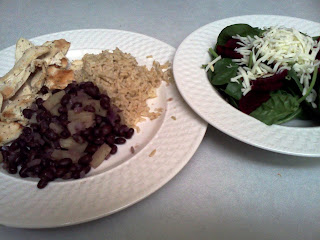Get your body fat tested by a professional.
The most accurate method for body fat testing is hydrostatic measurement (when combined with a lung capacity test and performed properly). The BodPod is a relatively new measurement standard that may be accurate, but both of these standards require at least 20 minutes per test, must be done in specific attire and under consistent conditions.
The next most accurate method is caliper testing. Caliper tests are as accurate as the professional taking the measurement. They measure mm of subcutaneous body fat at specific sites and use a calculation to determine overall body fat percentage.
The SKYNDEX (Durnin formula) uses a four site measurement that is plugged into a computer chip inside the gun. It calculates total body fat based on hydrostatic weighing.
The measurements standards such as impedence (body fat measuring scales and electrodes) measure density, not body fat. They vary greatly measurement to measurement based on water retention. It is best to use a consistent measurement standard and have the same professional test your body fat each time you have it measured.
Start thinking about FAT loss, not weight loss. Get your body composition measured and focus on how much FAT your trying to lose; it may not reflect what the scale is telling you. It's the fat that you want to lose, and the scale doesn't tell you how much fat you have. You have to have your body fat measured for that.
Weekly, bi-weekly and monthly readings should show your true progress as well as indicate if the diet you have mapped out is really working. There is no magic involved in getting your body to liberate stored fat. You must change the way you live and the way you eat.
No body is perfect, so embrace yourself as you are beautiful! Be true to yourself and love your body.
Join me on Facebook














